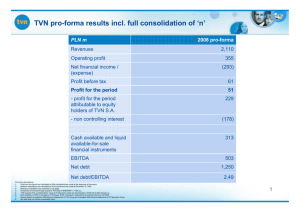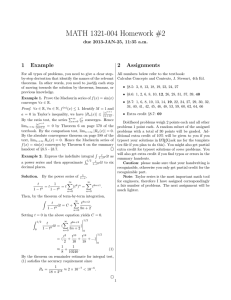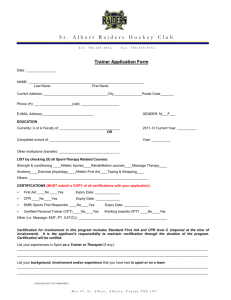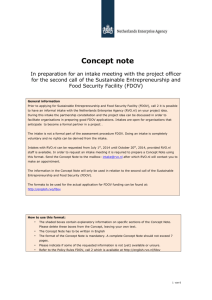Multi-core programming frameworks for embedded systems Kaushal Sanghai and Rick Gentile
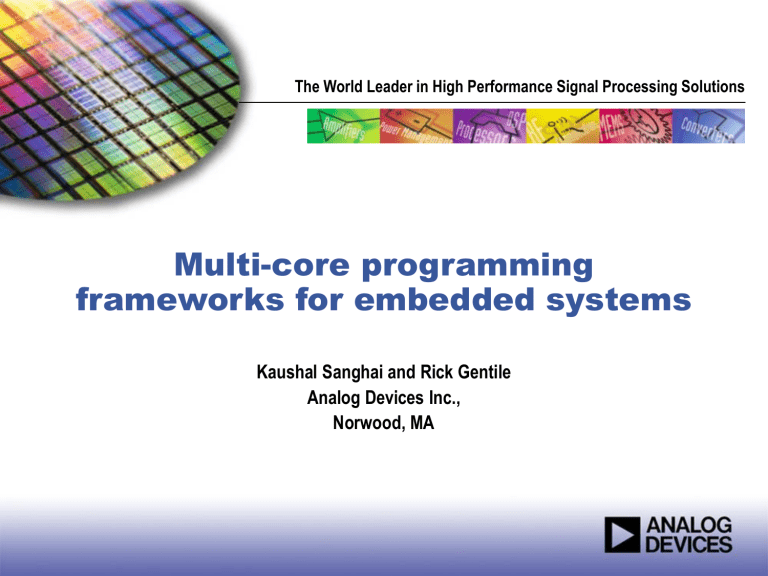
The World Leader in High Performance Signal Processing Solutions
Multi-core programming frameworks for embedded systems
Kaushal Sanghai and Rick Gentile
Analog Devices Inc.,
Norwood, MA
Outline
Multi-core programming challenge
Framework requirements
Framework Methodology
Multimedia data-flow analysis
BF561 dual-core architecture analysis
Framework models
Combining Frameworks
Results
Conclusion
Multi-core Programming Challenge
To meet the growing processing demands placed by embedded applications, multi-core architectures have emerged as a promising solution
Embedded developers strive to take advantage of extra core(s) without a corresponding increase in programming complexity
Ideally, the performance increase should approach “N” times where “N” is the number of cores
Managing shared-memory and inter-core communications makes the difference!
Developing a framework to manage code and data will help to speed development time and ensure optimal performance
We target some compute intensive and high bandwidth applications on an embedded dual-core processor
Framework requirements
Scalable across multiple cores
Equal load balancing between all cores
A core data item request is always met at the L1 memory level
Minimum possible data memory footprint
Framework methodology
Understanding the parallel data-flow of the application with respect to spatial and temporal locality
Efficiently mapping the data-flow to the private and shared resources of the architecture
Multimedia Data-flow Analysis
ADSP-BF561 Dual-core Architecture
Analysis
Dual-Core architecture
8-10 sclk
SDRAM (L3)
4x(16 – 128 MB)
8-10 sclk
L2 shared and Unified
Code and Data (128KB )
9 cclk
L1 Code (32KB)
SRAM
SRAM/Cache
Private L1 code and Data memory
Shared L2 and external memory
4 Memory DMA channels
L1 Data (64KB)
1 cclk
C o re A Core B
Shared peripheral interface
Framework models
Slice/Line processing
Macro-block processing
Frame processing
GOP processing
Framework design
Data moved directly from the peripheral DMA to the lowest
(Level 1 or Level 2) possible memory level based on the data access granularity
DMA is used for all data management across memory levels, saving essential core cycles in managing data
Multiple Data buffers are used to avoid core and DMA contention
Semaphores are used for inter-core communication
Line processing framework
Video In
Video Out
Rx_Line0
Rx_Line2
Tx_Line0
Tx_Line2
Core A
Internal L1 memory
Rx_Line1
Rx_Line3
Tx_Line1
Tx_Line3
Core B
Internal L1 memory
No L2 or L3 accesses made, thereby saving external memory bandwidth and DMA resources
Only DMA channels used to manage data
Applicable examples - color conversion, histogram equalization, filtering, sampling etc.
Macro-block processing framework
L2 Rx Buffers L2 Tx Buffers
Video In
Rx0
Rx1
Tx0
Tx1
Rx0
Rx1
Tx0
Tx1
Core A
Internal L1 memory
Core B
Internal L1 memory
No L3 accesses
Applicable examples - edge detection, JPEG/MJPEG encoding/decoding algorithms, convolution encoding etc
PPI1
Frame processing framework
L3 Frame Buffers
Rx0
Rx1
Tx0
Tx1
Rx0
Rx1
Core A
Internal L1 memory
Applicable example - motion detection
Rx0
Rx1
Tx0
Tx1
Rx0
Rx1
Core B
Internal L1 memory
GOP processing framework
L3 Frame Buffers
GOP = 4
Rx0
Rx1
Rx0
Rx1
Tx0
Tx1
Rx0
Rx1
Core A
Internal L1 memory
Rx0
Rx1
Rx0
Rx1
Tx0
Tx1
Rx0
Rx1
Core B
Internal L1 memory
Applicable examples - encoding/decoding algorithms such as
MPEG-2/MPEG-4
Results
Template
Line
Processing
Macroblock
Processing
Frame processing
Core cycles/pi xel*(appr ox.) single core
42
Core cycles/pixe l*(approx.)
- two cores
80
36
35
72
70
L1 data memory required( bytes)
L2 data memory required
(bytes)
Comments
( line size )*2; for ITU-656
- 1716*2
( Macro-block size(nxm) )*
2
( size of subprocessing block)*(num ber of dependent blocks )
Slice of a frame;
( macroblock height
*line size )*4
( size of subprocessing block)*(num ber of dependent blocks )
double buffering in
L1
double buffering in
L1 and L2
Only L1 or L2 cannot be used
double buffering in
L1 or L2
Using the Templates
Identify the following items for an application
The granularity of the sub-processing block in the image processing algorithm
The available L1 and L2 data memory, as required by the specific templates.
The estimate of the computation cycles required per subprocessing block
The spatial and temporal dependencies between the subprocessing blocks. If dependencies exist, then the templates needs modification to account for data dependencies
Conclusion
Understanding the data access pattern of an application is key to efficient programming model for embedded systems
The frameworks combine techniques to efficiently manage the shared resources and exploit the known data access pattern in multimedia applications to achieve a 2X speed-up
The memory footprint is equal to the smallest data access granularity of the application
The frameworks can be combined to integrate multiple algorithms with different data access pattern within an application
